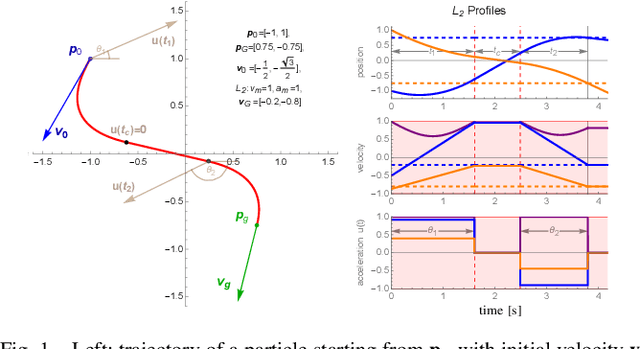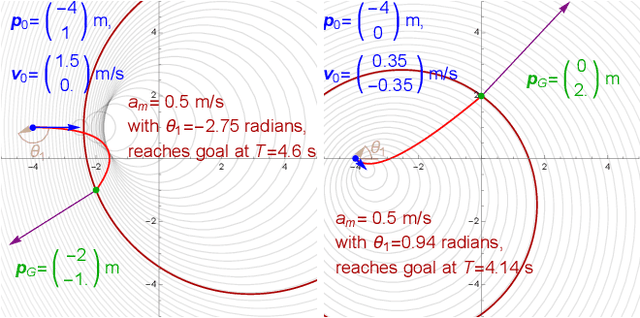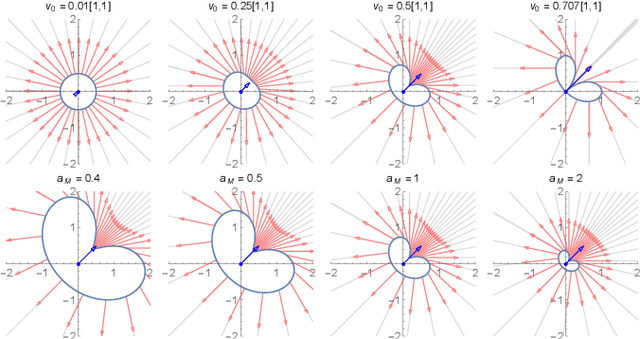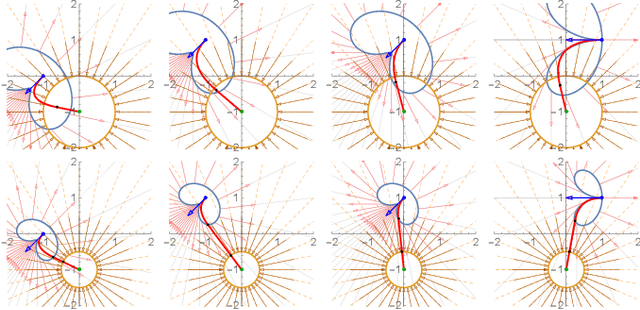Haoran Zhao
Michael Pokorny
SAGE: Semantic-Aware Shared Sampling for Efficient Diffusion
Sep 19, 2025Abstract:Diffusion models manifest evident benefits across diverse domains, yet their high sampling cost, requiring dozens of sequential model evaluations, remains a major limitation. Prior efforts mainly accelerate sampling via optimized solvers or distillation, which treat each query independently. In contrast, we reduce total number of steps by sharing early-stage sampling across semantically similar queries. To enable such efficiency gains without sacrificing quality, we propose SAGE, a semantic-aware shared sampling framework that integrates a shared sampling scheme for efficiency and a tailored training strategy for quality preservation. Extensive experiments show that SAGE reduces sampling cost by 25.5%, while improving generation quality with 5.0% lower FID, 5.4% higher CLIP, and 160% higher diversity over baselines.
A.S.E: A Repository-Level Benchmark for Evaluating Security in AI-Generated Code
Aug 25, 2025Abstract:The increasing adoption of large language models (LLMs) in software engineering necessitates rigorous security evaluation of their generated code. However, existing benchmarks are inadequate, as they focus on isolated code snippets, employ unstable evaluation methods that lack reproducibility, and fail to connect the quality of input context with the security of the output. To address these gaps, we introduce A.S.E (AI Code Generation Security Evaluation), a benchmark for repository-level secure code generation. A.S.E constructs tasks from real-world repositories with documented CVEs, preserving full repository context like build systems and cross-file dependencies. Its reproducible, containerized evaluation framework uses expert-defined rules to provide stable, auditable assessments of security, build quality, and generation stability. Our evaluation of leading LLMs on A.S.E reveals three key findings: (1) Claude-3.7-Sonnet achieves the best overall performance. (2) The security gap between proprietary and open-source models is narrow; Qwen3-235B-A22B-Instruct attains the top security score. (3) Concise, ``fast-thinking'' decoding strategies consistently outperform complex, ``slow-thinking'' reasoning for security patching.
SE-VLN: A Self-Evolving Vision-Language Navigation Framework Based on Multimodal Large Language Models
Jul 17, 2025Abstract:Recent advances in vision-language navigation (VLN) were mainly attributed to emerging large language models (LLMs). These methods exhibited excellent generalization capabilities in instruction understanding and task reasoning. However, they were constrained by the fixed knowledge bases and reasoning abilities of LLMs, preventing fully incorporating experiential knowledge and thus resulting in a lack of efficient evolutionary capacity. To address this, we drew inspiration from the evolution capabilities of natural agents, and proposed a self-evolving VLN framework (SE-VLN) to endow VLN agents with the ability to continuously evolve during testing. To the best of our knowledge, it was the first time that an multimodal LLM-powered self-evolving VLN framework was proposed. Specifically, SE-VLN comprised three core modules, i.e., a hierarchical memory module to transfer successful and failure cases into reusable knowledge, a retrieval-augmented thought-based reasoning module to retrieve experience and enable multi-step decision-making, and a reflection module to realize continual evolution. Comprehensive tests illustrated that the SE-VLN achieved navigation success rates of 57% and 35.2% in unseen environments, representing absolute performance improvements of 23.9% and 15.0% over current state-of-the-art methods on R2R and REVERSE datasets, respectively. Moreover, the SE-VLN showed performance improvement with increasing experience repository, elucidating its great potential as a self-evolving agent framework for VLN.
Comparing human and LLM politeness strategies in free production
Jun 11, 2025Abstract:Polite speech poses a fundamental alignment challenge for large language models (LLMs). Humans deploy a rich repertoire of linguistic strategies to balance informational and social goals -- from positive approaches that build rapport (compliments, expressions of interest) to negative strategies that minimize imposition (hedging, indirectness). We investigate whether LLMs employ a similarly context-sensitive repertoire by comparing human and LLM responses in both constrained and open-ended production tasks. We find that larger models ($\ge$70B parameters) successfully replicate key preferences from the computational pragmatics literature, and human evaluators surprisingly prefer LLM-generated responses in open-ended contexts. However, further linguistic analyses reveal that models disproportionately rely on negative politeness strategies even in positive contexts, potentially leading to misinterpretations. While modern LLMs demonstrate an impressive handle on politeness strategies, these subtle differences raise important questions about pragmatic alignment in AI systems.
Let LLMs Break Free from Overthinking via Self-Braking Tuning
May 21, 2025Abstract:Large reasoning models (LRMs), such as OpenAI o1 and DeepSeek-R1, have significantly enhanced their reasoning capabilities by generating longer chains of thought, demonstrating outstanding performance across a variety of tasks. However, this performance gain comes at the cost of a substantial increase in redundant reasoning during the generation process, leading to high computational overhead and exacerbating the issue of overthinking. Although numerous existing approaches aim to address the problem of overthinking, they often rely on external interventions. In this paper, we propose a novel framework, Self-Braking Tuning (SBT), which tackles overthinking from the perspective of allowing the model to regulate its own reasoning process, thus eliminating the reliance on external control mechanisms. We construct a set of overthinking identification metrics based on standard answers and design a systematic method to detect redundant reasoning. This method accurately identifies unnecessary steps within the reasoning trajectory and generates training signals for learning self-regulation behaviors. Building on this foundation, we develop a complete strategy for constructing data with adaptive reasoning lengths and introduce an innovative braking prompt mechanism that enables the model to naturally learn when to terminate reasoning at an appropriate point. Experiments across mathematical benchmarks (AIME, AMC, MATH500, GSM8K) demonstrate that our method reduces token consumption by up to 60% while maintaining comparable accuracy to unconstrained models.
Building Machine Learning Challenges for Anomaly Detection in Science
Mar 03, 2025Abstract:Scientific discoveries are often made by finding a pattern or object that was not predicted by the known rules of science. Oftentimes, these anomalous events or objects that do not conform to the norms are an indication that the rules of science governing the data are incomplete, and something new needs to be present to explain these unexpected outliers. The challenge of finding anomalies can be confounding since it requires codifying a complete knowledge of the known scientific behaviors and then projecting these known behaviors on the data to look for deviations. When utilizing machine learning, this presents a particular challenge since we require that the model not only understands scientific data perfectly but also recognizes when the data is inconsistent and out of the scope of its trained behavior. In this paper, we present three datasets aimed at developing machine learning-based anomaly detection for disparate scientific domains covering astrophysics, genomics, and polar science. We present the different datasets along with a scheme to make machine learning challenges around the three datasets findable, accessible, interoperable, and reusable (FAIR). Furthermore, we present an approach that generalizes to future machine learning challenges, enabling the possibility of large, more compute-intensive challenges that can ultimately lead to scientific discovery.
Non-literal Understanding of Number Words by Language Models
Feb 10, 2025Abstract:Humans naturally interpret numbers non-literally, effortlessly combining context, world knowledge, and speaker intent. We investigate whether large language models (LLMs) interpret numbers similarly, focusing on hyperbole and pragmatic halo effects. Through systematic comparison with human data and computational models of pragmatic reasoning, we find that LLMs diverge from human interpretation in striking ways. By decomposing pragmatic reasoning into testable components, grounded in the Rational Speech Act framework, we pinpoint where LLM processing diverges from human cognition -- not in prior knowledge, but in reasoning with it. This insight leads us to develop a targeted solution -- chain-of-thought prompting inspired by an RSA model makes LLMs' interpretations more human-like. Our work demonstrates how computational cognitive models can both diagnose AI-human differences and guide development of more human-like language understanding capabilities.
Humanity's Last Exam
Jan 24, 2025Abstract:Benchmarks are important tools for tracking the rapid advancements in large language model (LLM) capabilities. However, benchmarks are not keeping pace in difficulty: LLMs now achieve over 90\% accuracy on popular benchmarks like MMLU, limiting informed measurement of state-of-the-art LLM capabilities. In response, we introduce Humanity's Last Exam (HLE), a multi-modal benchmark at the frontier of human knowledge, designed to be the final closed-ended academic benchmark of its kind with broad subject coverage. HLE consists of 3,000 questions across dozens of subjects, including mathematics, humanities, and the natural sciences. HLE is developed globally by subject-matter experts and consists of multiple-choice and short-answer questions suitable for automated grading. Each question has a known solution that is unambiguous and easily verifiable, but cannot be quickly answered via internet retrieval. State-of-the-art LLMs demonstrate low accuracy and calibration on HLE, highlighting a significant gap between current LLM capabilities and the expert human frontier on closed-ended academic questions. To inform research and policymaking upon a clear understanding of model capabilities, we publicly release HLE at https://lastexam.ai.
LawLLM: Law Large Language Model for the US Legal System
Jul 27, 2024



Abstract:In the rapidly evolving field of legal analytics, finding relevant cases and accurately predicting judicial outcomes are challenging because of the complexity of legal language, which often includes specialized terminology, complex syntax, and historical context. Moreover, the subtle distinctions between similar and precedent cases require a deep understanding of legal knowledge. Researchers often conflate these concepts, making it difficult to develop specialized techniques to effectively address these nuanced tasks. In this paper, we introduce the Law Large Language Model (LawLLM), a multi-task model specifically designed for the US legal domain to address these challenges. LawLLM excels at Similar Case Retrieval (SCR), Precedent Case Recommendation (PCR), and Legal Judgment Prediction (LJP). By clearly distinguishing between precedent and similar cases, we provide essential clarity, guiding future research in developing specialized strategies for these tasks. We propose customized data preprocessing techniques for each task that transform raw legal data into a trainable format. Furthermore, we also use techniques such as in-context learning (ICL) and advanced information retrieval methods in LawLLM. The evaluation results demonstrate that LawLLM consistently outperforms existing baselines in both zero-shot and few-shot scenarios, offering unparalleled multi-task capabilities and filling critical gaps in the legal domain.
Minimum-Time Planar Paths with up to Two Constant Acceleration Inputs and $L_2$ Velocity and Acceleration Constraints
Mar 07, 2024



Abstract:Given starting and ending positions and velocities, $L_2$ bounds on the acceleration and velocity, and the restriction to no more than two constant control inputs, this paper provides routines to compute the minimal-time path. Closed form solutions are provided for reaching a position in minimum time with and without a velocity bound, and for stopping at the goal position. A numeric solver is used to reach a goal position and velocity with no more than two constant control inputs. If a cruising phase at the terminal velocity is needed, this requires solving a non-linear equation with a single parameter. Code is provided on GitHub at https://github.com/RoboticSwarmControl/MinTimeL2pathsConstraints.
 Add to Chrome
Add to Chrome Add to Firefox
Add to Firefox Add to Edge
Add to Edge